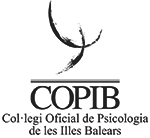Claire A. G. J. Huijnen
Zuyd University of Applied Sciences, The Netherlands
INSIGHTS ON INTERVENTIONS USING ROBOT KASPAR FOR CHILDREN WITH AUTISM SPECTRUM DISORDERS
Abstract
Although it might sound contradictory to use a robot to support children with autism spectrum disorder in their communicative or social development, research findings have shown that robot mediated interventions can support these children. Why is this? And how can this be of use in practice? Practical insights and lessons learned will be presented on using robot KASPAR in interventions for children with autism. Many professionals working with children in special needs schools or care facilities as well as parents and adults with autism have collaborated the last 5 years to better understand if and how robot KASPAR can add meaningful things. Therapy and educational goals KASPAR can address are shared, as well as insights on how to apply a tool such as KASPAR in practice. Finally, experiences from working with KASPAR with children with autism will be presented. Hopefully, by the end of this talk the audience will be open for or even inspired about what robots can potentially mean for children with autism.
Claire works at the Research Centre for Technology in Care at Zuyd University of Applied Sciences, in the Netherlands. She studied Psychology at the University of Maastricht, where she graduated in 2000, and then she earned another post graduate degree at the Technological University of Eindhoven in 2002 on User System Interaction. Her research focuses on the use of social robots in order to support people. She has actively worked on the project “Social robots in health care” (RAAK PRO project), which consists on the implementation of interventions that include robots in care or education. Specifically, she is an expert in interventions that use the KASPAR robot, developed to support children with autism in the field of communication and social interaction. She is the author of relevant and current publications on the use of robots in child and adolescent therapy. Some examples are: “How to Implement Robots in Interventions for Children with Autism? A Co-creation Study Involving People with Autism, Parents and Professionals” (2017), “Mapping Robots to Therapy and Educational Objectives for Children with Autism Spectrum Disorder” (2017), and “Matching Robot KASPAR to ASD Therapy and Educational Goals” (2016).
















